Mark Rein·Hagen's Exile by Asimo
An RPG History Lesson
Original SA post Mark Rein·Hagen's Exile
Mark Rein·Hagen's Exile

Part One: An RPG history lesson
It's been a while since I've done an F&F review, and like my prior few I'm going to go into the history of roleplaying games. Before, this involved reviewing games and supplements from the early 80's that most people have long since forgotten, but this time we'll be traveling into the exciting 90's! There's just one small problem... the game I'm going to be talking about never actually got released .
To explain a bit, we'll need to give some history of White Wolf and Mark Rein·Hagen. Forgive me if this is incomplete, since I'm going off memory and what little remains on the web these days. Rein·Hagen and Jonathan Tweet (and later, Lisa Stevens) founded Lion Rampart in 1987, where they co-wrote and produced Ars Magica , a well-received game with several interesting game mechanics, such as players controlling multiple characters. Still, Lion Rampart struggled a bit like a lot of small RPG companies tend to and merged with Stewart Wieck's White Wolf Magazine , forming White Wolf Game Studio in 1990.
The company still struggled for a bit until they released some small game that started a certain game line that apparently had some modest success.

In 1998, after the World of Darkness was well-established, Rein·Hagen began work on a sci-fi RPG titled Exile . Here's where it... gets a bit strange. He actually started a non-profit organization called the Null Foundation to own the rights. To be honest I'm not... entirely sure what the point of it was, but at the time there was a bit of financial trouble at White Wolf and less than a year later Rein·Hagen left the company and took Exile and the Null Foundation with him*.
*If anyone does have more information/gossip about what was going on behind the scenes, please feel free to elaborate.
An interesting thing about the Null Foundation is that it had a rather large web presence for when it came out. For the kids in the audience here, 1996 was the era where you were probably connecting through dual-up to America Online or Compuserve, and the Google search engine wouldn't be released for another two years. So it was a pretty prominent presence! Of course, considering this was almost twenty years ago there's not much sign of it left, but archive.org still has a copy of the Null Foundation website if you want to give it look. In addition, the company had an official MUSH to RP in the setting (a text-based chat server, somewhere between a MUD and IRC chat), and in what's most important for this review, they actually put playtest rules up on their site to freely download.
For various reasons that are mostly lost to history, the Exile RPG never actually got released. My suspicion is that Rein·Hagen had big expectations that were impossible to meet, considering the website notes they were looking for partners for a "computer-generated animated series", there's constant mentions about a Null Cosm implying that they were hoping for a WoD-style success, and other such... poor business decisions. Despite the RPG never getting a release, the Null Foundation eventually got folded into Rein·Hagen's new company "Atomaton, Inc" and in 2001 they released Z-G (as in, "zero gravity"), a game very loosely based on the concepts and setting.
Specifically, a " collectible action figure game " which let you snap pieces onto the figures and collect... power cards and stuff to use them in not-quite-miniature gameplay.

Honestly, it wasn't a horrible idea... but considering it came out after the initial CCG rush when stores were already loaded with unsold merchandise it just didn't have a prayer. Not helping matters was the rise of collectible miniature games like Mage Knight that offered much more value for the money. To the best of my knowledge the company only ever released the initial two figures and the card booster pack, and Atomaton finally folded in 2003.
So what the hell was Exile?
Luckily, archive.org makes this part easy.
 Quoting the website...
Quoting the website...
null-f.org posted:
Design Precepts
We have a number of design precepts in ExileTM, which we have used to give us focus and direction. They describe what makes ExileTM different from TravelerTM, Star WarsTM, and any other Space Opera. This is a wild and crazy nearly endless series of worlds, where the imagination is the only real limit for what you might find. Here's how we're going to hold it all together.
- Conspiracy. The mood of Exile TM is that of layers of conspiracy so thick the truth can never be known. The question that always arises is who is really in control, how much power do they really have, and what are they up to?
- Suspense. More than anything else, this has a mood of film noir, shadows and fog. This is not clean-cut science fiction, ExileTM possesses the fuzziness of the unknown. The universe is vast and most of it is still a mystery to us.
- hard-core Science Fiction. Though things get pretty far out, everything (in the end at least) makes sense, both scientifically and rationally. All explanations for scientific phenomena, when we provide one at all, must be presented in a logical formal manner and make coherent sense in terms of scientific principles.
- Role-playing with an edge. Your character represents and must deal with issues fundamental to the human condition. Ultimately this game needs is about the Self, and the triumph over despair.
- Unique Presentation. Whatever we do, this game cannot resemble any aspect of the Storyteller system. We want to reach a new audience, reminding them as little as possible of Vampire et al. The style and mood of the cover and graphics should be a something completely new in the industry. The art should be realistic looking, enigmatic, and perhaps use the medium of modified photographs (which can be created in-house).
- Eerie Familiarity. In order to give this setting a contemporary and somewhat eerie feel, I want to make many aspects of it parallel things in our world.
- Immortality. There are people in the Hegemony, powerful senators and such, who are effectively immortal. How this affects politics and intrigue can easily be seen in Vampire, from which we will take a few thematic elements (for later games at least, initially we won't focus much on Diadar or Trinary).
- Clones. Cognates are a major political factor, and these clans of clones plan a major role in the society and political structure of the Hegemony.
- Historical Connotations. The setting of the Hegemony is loosely based on that of the age of conquest mixed with the British Empire and a liberal dose of Asian cultures (mostly third dynasty China) mixed in. This multicultural mix should pull us away from the purely western POV so common to so many SF settings.
To put it charitably, it's clear Rein·Hagen was going for what could be described as-
Art Guidelines posted:
Space Suits - Forget the bulky 'bubble head' space suits you always see. The Ulsters used in Exile are skin-tight, highly flexible and nearly untearable second skins. Think black latex fetish gear, painted with all sorts of wild and personalized designs.
 This will get even more obvious once we get into the game itself.
This will get even more obvious once we get into the game itself.
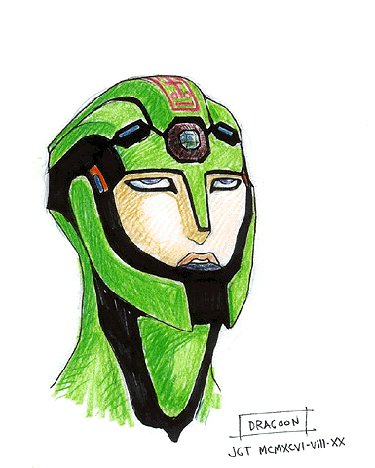
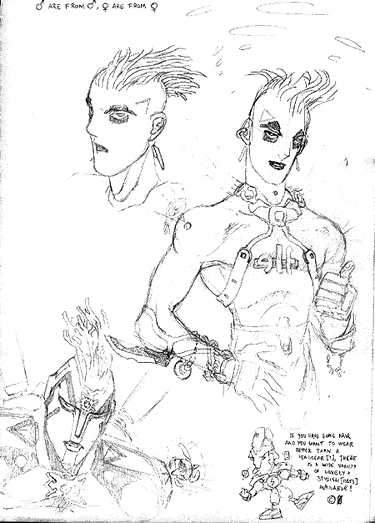
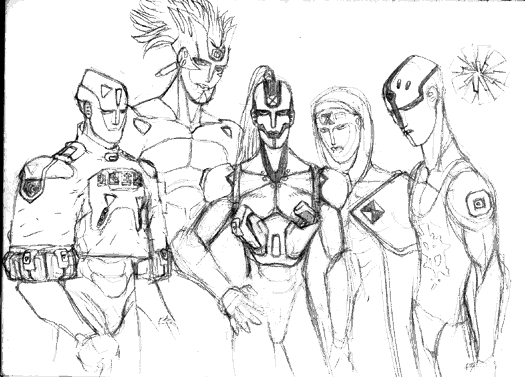
(These were huge images on an 800x600 CRT display, really)
You said something about a playtest draft?
quote:
*** Cover: Imagine a 7 X 10 spiral bound book book (sic) (bound on the short side) with a black plastic cover. Imprinted on it (or perhaps a holographic sticker attached to it) it the exile petroglyph and the word: ***

As mentioned earlier, the Null Foundation had a fairly large web presence for the era, and they tried to take advantage of this by
Of course, it's important to keep in mind that the Exile playtest drafts can only be charitably be called a "complete game", and I'm pretty sure they're not actually playable as written. But this isn't a game review and it's something more of a history lesson, and as one of the handful of people who remembers this thing even existed I'm going to do my best here!
Too Many Goddamn Words
Original SA post Mark Rein·Hagen's Exile
Mark Rein·Hagen's Exile

Part Two: Too many goddamn

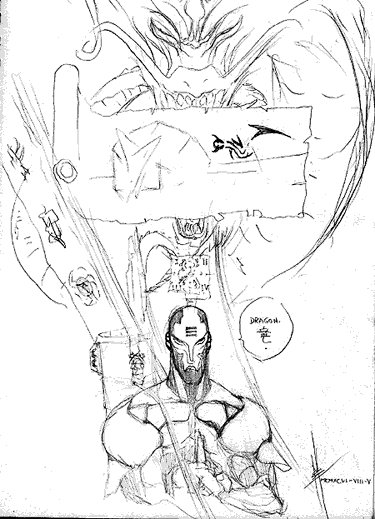
Where we left off, I was talking about how Exile almost came about and the weird history of its development at White Wolf and the Null Foundation. Today, we'll be going through the playtest documents and looking at what was actually look at the setting information and introductory materials. When I quote the material, I'll try and mention whether it's from the HTML playtest stuff on archive.org or from the PDF draft.
PDF Draft posted:
This early version of Exile is an incomplete rough draft and contains limited setting information (with none at all on the Grange). This is simply a first edition of the rules and character creation.
We open with a form letter...
HTML Draft posted:
Dear Madam or Sir,
The Immigration and Census council of the Hegemony regrets to inform you that you have been selected for Relocation. We urge you to embrace this fact as an opportunity to achieve greater advancement in your life. Though life is certainly pleasurable here in Trinary, we have the utmost confidence that you will find success beyond this system.
The draft goes on with a second letter from a presumably sympathetic source, noting that the setting information is done in-character as a "Manifesto" for characters who are newly Exiled. There's some differences between the drafts here, but the idea is gotten across simply enough. The first is that "Trinary" is effectively a paradise, and you've been kicked out of it. And...
HTML Draft posted:
In the Grange, Books are not so uncommon. Here, they are neither illegal nor burned. We trust books over the Artifex because they do not tell us what we want to hear, they only record what others have spoken. That is why we have chosen this medium to pass on our ideas to you.
PDF Draft posted:
Possession of this book inside the Hegemony will result in your immediate Banishment. If you are not already an Exile, read this at your own risk. Do not open this within sight of any type of T-fex, whether its your Valet or your Drudge. If you are captured, delay revealing who passed this on to you until they have a chance to escape.
Like most White Wolf games, that there's a fuckload of jargon that you're expected to internalize before RPing.
 The drafts diverge a bit here... the HTML draft starts with the glossary, and for the sake of sanity I'll drop it here first before we delve into the rest.
The drafts diverge a bit here... the HTML draft starts with the glossary, and for the sake of sanity I'll drop it here first before we delve into the rest.
HTML Draft posted:
Grange-Argot
We have our own language out here -- the faster you learn it, the faster you fit in. Slang changes quickly out here, so words go in and out of style all the time.
Honorifics
- Breed -- The particular mutation of homo sapien you are...
- Dreug -- shipmate, close companion.
- Nob -- Someone who still honors the ways of the hegamony and actively supports and serves their syndics. A fighting word.
- Wreck -- To kill someone. "I'm going to wreck him."
- Slag -- Ruined machina and artifex of any kind. Also used as a swear word for humans, "What a Slager"
- Baba -- Familial term of endearment. Friend. "Hey Baba, whats up?"
- Vibe -- Trancer term for party
- Cretchen -- Someone from Diadar. Because they were born and raised in a cretch
- Gaunch -- Slang for looser. Originally, execution by impalement, the favored mode of execution out here on many colonies and waysations. Subjects of the Gaunch are typically left up for a week or more as a reminder to the local population as to the rule of the Viceroy.
- Flame Job -- Stardiving, typically coming out of a star, not going in.
- Primates -- Slang for exotics, any non hegamony human stemming off from the classic Homo form.
- Null-Cant -- The every evolving pidgin tongue used by many in the Grange, a polyglot amalgam of many languages first brought together by star traders hundreds of thousands of years ago and in constant evolution ever since.
- Exarch -- A Hegemony big shot
- Roaches -- Primates that have escaped their planet and joined civilization, and somehow manage to live aboard ships and waystations.
- Skin-II's -- Slang for an Ulster, the protection gear you'd better get used to wearing all the time when you're in space.
- Horde -- the common name for the barbarians who plague civilization
- Scourge -- A nanotech plague, which has destroyed entire worlds. It plagues the barbarians and is the source of innumerable plagues.
- The Rack ñ Nickname for the RDIS cleansing system that most waystations use t clease all those who enter to prevent infection.
- Tellurian -- A human from and still on earth, or anything of and from earth.\
- Go Tactical -- You get aggresive in combat, turn off your navifex and go into manual mode.
- Quotha -- A rediscovered anarchic slang, "indeed"
- Proxy -- A standin for someone who has been exiled. In returned of being exiled in their stead, they are given considerable sums of money.
- Looper -- An explorer or surveyer. Someone who explores systems and planets surface in search of salvage, history or in preparation for a colony.
- Outlander -- An oldtimer who habituates the outer grange and is rarely seen in the near stars.
While the ancient honorifics are still used here in the Grange, few of us them in the traditional style.
- Qua -- Though some still use Qa at the end of the name of an elder, it has been bastardized to use to call someone you don't know.
- Ba -- Still used by many when speaking with their peers, Ba has muted into the colloquial term, Baba.
- Nuen -- Few in the grange still use Noune with their inferiors, because out here, no one considers themselves inferior. Don't use Nuen unless you want to get into a fight.
 For brevity I'll omit the ones that are already in the other draft.
For brevity I'll omit the ones that are already in the other draft.
PDF Draft posted:
• Hegemony — The galactic government that controls humanity within the inner worlds.
• Exile — One who has been ordered out of the Hegemony and forbidden to return.
• Trinary — The three star system at the heart of the Hegemony. Viewed as the hub of civilization.
• Diadar — The paradise world that serves as the capitol of the Hegemony.
• Hegamon — The leaders and politicians of the Hegemony. Rulers of the worlds of Trinary.
• Godhead — The huge central processing matrix of the Hegemonic administration.
• Solon — The highly advanced robotic servants of the Godhead.
• Stardiving — Hyperspace travel accomplished by diving into stars.
• Star Spires — The huge stardiving spaceships of the Hegemony that transport smaller ships through stardives. They still operate but are not as vital as they once were due to the discovery of the Icarus Drive.
• Null-Space — The mysterious time and space between stars during a stardive.
• Pactum Weal — The ancient treaty that is the basis for the Hegemony.
• Syndics — Groups and Affiliations that hold power and influence in the Hegemony and beyond.
• Artifex — The robotic servants of humanity. Often referred to as T-fex.
• Lode — The robotic brains of the Artifex.
• Cule — Artifex data storage spools.
• Prelate — The highest political office in the Hegemony. Chairperson of the Hegemonic council.
• Consul — Second highest political office in the Hegemony that deals with treaties and the military.
• Lemmings — The small ships that attach themselves to the stardiving vessels just after they begin their plunge and in so doing piggyback through the hyperspace travel. While some ships have defence systems to thwart this, it is difficult to ward off Lemmings once a dive has begun. If too many ships attempt to Lemming, all will be destroying in the fires of the sun, including the Stardiver.
• Ulster — Spacesuit. Your second skin in space.
• Diaspora — The colonization of the galaxy by humanity... Also the term for the collective sum total of all the colonies and all of humanity about the galaxy.
• Horde — The common name for the barbarians who plague civilization and tear at the Hegemony’s borders.
• Parsec — A Parsec is considered to be the distance between two Suns, the distance jump technology can take you. Sometimes multiple Parsecs are required to reach certain locations. Hence, distances are referred to as four parsecs distant or six parsecs off.
• Grange — Our home. Your home. The so called Frontier, beyond the great barrier, beyond the borders of the Hegemony and beyond the reach of their oppression.
 I think the PDF draft is a later iteration, which makes some sense; there's a lot of terms that come up often (like "ulster") that don't show up in the earlier glossary. On the other hand it has a lot less setting information... well, anyway, try and remember both of these when I quote other sections I guess!
I think the PDF draft is a later iteration, which makes some sense; there's a lot of terms that come up often (like "ulster") that don't show up in the earlier glossary. On the other hand it has a lot less setting information... well, anyway, try and remember both of these when I quote other sections I guess!
In addition to the glossary, the PDF draft goes into some terminology on the robots and computers of the setting, giving them a few paragraphs of explanation. Artifex are robotic servants, specifically the sentient sorts. The text helpfully goes on to mention that their lives are horrible and they struggle to find some sort of unique identity. Lodes are essentially the AI computers, complicated enough that only the Hegemony can create them. They come in seven grades, with the seventh being almost as intelligent as humanity. Cules are hard drives and memory banks, but in spaaaace.

Next time: Something that's more than just copy-pastes of dumb jargon!
The Great Syndics
Original SA post Mark Rein·Hagen's Exile
Mark Rein·Hagen's Exile

•Part Three: The Great
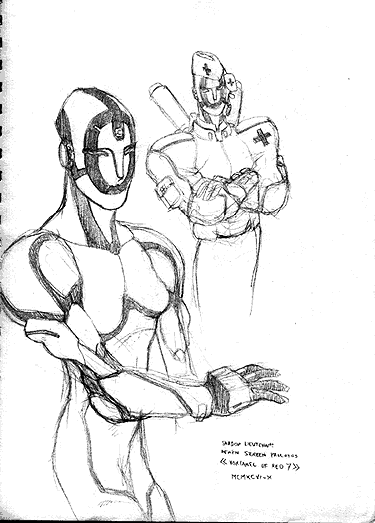
It should probably go without saying that a late 90's game being developed by White Wolf staffers divides the important players of the setting into
•Androgynes•
HTML Draft posted:
We used to see the beautiful people of the Androgyne on Diadar, lounging in the gardens, performing on the spool dramas, officiating at the Ceremonies. They were the creatures of artifice and desire, genetically engineered for elegance and sensitivity -- arguably, the most wondrous of the Exotic species. Their very faces entranced us, disturbed our sleep with strange, hot dreams. More beautiful, more desirable than human.
PDF draft posted:
Apart from their roles as mediators; a talent that can possibly be attributed to their exceptional communication skills and obvious physical beauty, the Androgyne spend much of their energy in artistic pursuits. As objects of beauty themselves, they hold art in all its forms in high regard. The most famous media stars, models and actors have all been Androgyne.

PDF draft posted:
Anyone who has had close contact with Androgyne can attest to their natural allure. As part of their physiology, they produce a wide array of complex pheromones that they use to carefully manipulate the emotional states of those around them as well as accentuate the reactions their appearance engenders in others. There has been much evidence to support the theory that their pheromones possess an addictive quality. The more you time you spend with an Androgyne, the more time you wish to spend with them. They are doppelgangers of a sort, yet their shape-shifting abilities are limited to sexual characteristics and minor appearance changes. They can intuitively and subtly alter their appearance to more closely resemble their target's conception of the perfect mate. This often leads to almost sacred bonding between mates.
 Well. Moving on...
Well. Moving on...
•Sark Saron•
Only mentioned in the PDF, so maybe excised in the later setting drafts? In any case,
PDF Draft posted:
On the distant world of Sarkon, the Sark'Saron were born, the result of a genetic experiment to create the perfect soldier. The Sark'Saron are the oldest of the exotics, their birth lying far back in the dim reaches of perhaps the second aeon. No records are known to exist that detail the earliest creation and implementation of the Sark'Saron, but the evidence of their origins can be found in their DNA: they are a genetic construct, an uplifted race derived from some long lost reptilian species. Who created them and how they were made remains a mystery.
Overall, a pretty
 race.
race.
•Starborn (Reisir)•
PDF Draft posted:
There are few Exotic races within the Hegemony that elicit as much speculation and wonder, as the Reisir: the Starborn. Possibly the natural evolutionary outcome of humanity's expansion into the stars, they have become especially suited to an extra-planetary existence. Starborn musculature is light, yet highly flexible. Their skeletal structure has been replaced with cartilaginous tissues but, they are considerably more durable than their slight frames would suggest. They are so well adapted to the rigors of space that they are capable of enduring exposure to hard vacuum for up to ten minutes with their reflective skins being temperature withholding and radiation resistant. They have hairless, smooth skinned bodies with long limbs and large eyes, resembling in many ways pearlescent skinned children.
Yeah, there's some overlap with Mass Effect's Quarians there, but there's still a few differences. For one thing, everyone in the setting gets fetishwear space gimpsuits they almost never take off!

Anyway, they're initially descended from a single lineage and tend to consider each other family, and have a procedure that can change most human races into Starborn if you wanted to be a pearl-skinned space kid. For some reason they also have wide rage of speech, and...
PDF draft posted:
Their names are long intricate songs of ancestry and heraldry, combining their ultra and sub-sonic speech with coruscating colour patters radiated from the sacs of bioluminescent organelles located on either side of their head.
Next time: More Syndics! Do you want a job?
More Great Syndics
Original SA post Mark Rein·Hagen's Exile
Mark Rein·Hagen's Exile

•Part Four: Yet More Great Syndics•
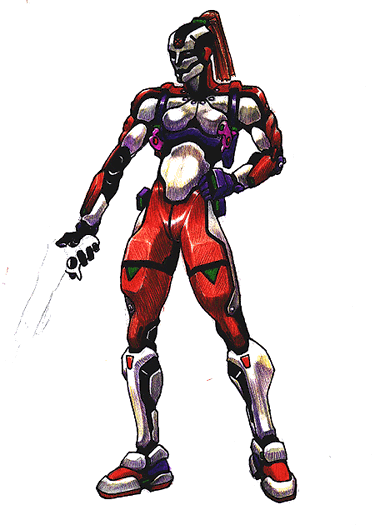
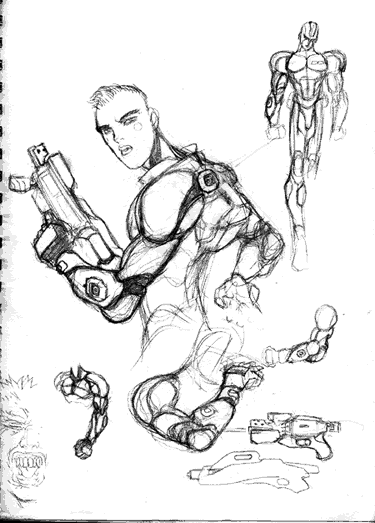
When we left off before, we were talking about the Syndics , the major factions and power blocs in the setting that also convenient double as player character groups. This time we'll be going into the careers, the Syndics that focus around who you're working with rather than what you are.
•The Armada•
HTML Draft posted:
The Armada is the most ancient of all the Syndics, a legacy that is upheld with the most intense commitment.
Defenders of the Hegemony's borders, the Armada sees itself as the most powerful and disciplined fighting force in the galaxy, dedicated and untarnished guardians of the Republic. Their massive fleets have stood watch at the Barricade for eons, protecting the Hegemony from the ever-circling barbarians and other invaders.
<<< Legend has it that long ago the Dreadnoughts imploded all the suns at the Hegemony's borders so that invaders couldn't launch an attack through them. The Armada still patrols this Barricade of brown dwarves, but now forays beyond them as well, into the Grange. >>>
 Rather than a force of enlisted volunteers, they're almost more like a social caste; entire families are born into the Armada and become soldiers or officers when they become of age, repeating the process throughout the centuries. They have an
Rather than a force of enlisted volunteers, they're almost more like a social caste; entire families are born into the Armada and become soldiers or officers when they become of age, repeating the process throughout the centuries. They have an
The fleets of the Armada are focused around the (four or seven, depending on the draft) Dreadnoughts, massive vessels capable of smashing entire planets to rubble or destabilizing a star. While effectively invulnerable, the ability to construct these dreadnoughts has been lost to history, and is one of the few overt signs of the creeping decline of the Hegemony. They also employ numerous smaller ships, and these are the ones most often seen in the Grange as the Dreadnoughts themselves are usually pressed into service against the alien Horde instead. The public doctrine is that the war will be over shortly and the aliens are outmatched, but it's been running for over seventy years now and the Exiles know that it's effectively a stalemate. But the resources and matériel surplus being fed into the Armada is one of the things that keeps the Grange supplied and economically sound...
The drafts actually take different routes with the enemies the Armada are fighting. The html draft focuses more on the Horde being "barbarians" and aliens who are resisting the Hegemony from outside, while the PDF draft offers some other threats...
PDF Draft posted:
A particular branch of the Navy, not as well known as it's associate branches, who's true purpose remains a closely guarded military secret is the Substellar Corps. Mistakenly referred to as the Submariners, they have the highest casualty rate of all the Navy branches, both physically and mentally. Their sleek, heavily armed, specially designed Null-Ships ply the pathways of Nullspace. What their mission is and what they face the Navy refuses to elaborate upon. Rumours abound of encounters with an extra-dimensional alien presence somehow related to black holes. Of all Naval branches, the Substellar Corps has the largest concentration of Voidians.
•The Vanguard•
HTML Draft posted:
*** The Vanguard uses "bug icons" -- beetles, mantises, ants -- in its ship and uniform designs, and these should be used as the Micrographics. Ulster helmets are stylized bug heads consistent with their division. These designs aren't as ornate as the Armada; more functional style than a concerted effort to look imposing. ***
Brash, violent and coarse, Vanguard Legionnaires are both feared and respected in the Grange. They pride themselves on being the premier close combat personnel, and out here where deeds hold more weight than words, that pride is justified. They constantly save entire systems from Horde incursion -- and worse -- and never admit fear. Still, their unmatched zeal and determination has given them a reputation for being relentless and bloodthirsty.
<<< They're as likely to tear through an independent colony or subjugate an Exotic world "on orders" as help against the Horde menace. Many of their atrocities are committed under orders from Praetors commanding Vanguard forces (and a lot of them are petty despots using Legionnaires to enforce their vision of order). >>>
 ... er, not in the WH40K sense, but there's still a bit of that in there too. Still, while the Armada is elegant and calculating and probably all talk with sinister British accents, the Vanguard is aggressive and emotional. They're the ones who do the fighting planetside, with the equivalents of modern infantry and armored vehicles, often landed through dropships.
... er, not in the WH40K sense, but there's still a bit of that in there too. Still, while the Armada is elegant and calculating and probably all talk with sinister British accents, the Vanguard is aggressive and emotional. They're the ones who do the fighting planetside, with the equivalents of modern infantry and armored vehicles, often landed through dropships.
They have a bit of a rivalry with the Armada, thinking them effete ivory-tower sorts while the legions of the Vanguard does all the actual work. They have less political power due to being recruits rather than hereditary officers in close with the Hegemony leadership. But the Armada has the ships, and everyone knows it'd probably be the Vanguard putting dissidents against the wall, so everyone plays nice. Mostly.
•The Diplomatic Service (The Interior Ministry)•
HTML Draft posted:
<<< If information is power, then the Diplomatic Service is power, for there is little that happens in the Hegemony that the Interior Ministry does not know about or is not directly involved in. >>>
The Interior Ministry exists as part of a mundane political office attached to the Hegemonical Council, charged with performing duties of diplomacy in the name of the Hegemony and providing advanced information services for the state. Their influence reaches far beyond the limits of their public activities. They have existed as a shadow power behind the Hegemony since its birth and have endured radical political change from century to century. The Diplomatic Service, in one form or another, has survived every major episode in the growth of the Hegemony, from coups and revolutions to pogroms and purges.
<<< Forget all you ever heard that was good or just about the DS. Remember all the rumors and stories you heard whispered. >>>
 In addition to the overt diplomatic services with the Grange governments, factions within the Hegemony, and outside races, they also take a very active role in Hegemony affairs and effectively function as a shadow government. The Diplomatic Service organizes coups, presents propaganda, arranges pogroms of undesirables (like most of our Exile PCs), and otherwise engages in large scale social engineering and terror programs in order to preserve the status quo of the Hegemony. They're arguably the most powerful Syndic simply due to the political clout they can call to bear in other to make the other Syndics do what they want, and their unlucky enemies get "vanished" into secret prisons or shallow graves rather than the relatively gentle punishment of exile.
In addition to the overt diplomatic services with the Grange governments, factions within the Hegemony, and outside races, they also take a very active role in Hegemony affairs and effectively function as a shadow government. The Diplomatic Service organizes coups, presents propaganda, arranges pogroms of undesirables (like most of our Exile PCs), and otherwise engages in large scale social engineering and terror programs in order to preserve the status quo of the Hegemony. They're arguably the most powerful Syndic simply due to the political clout they can call to bear in other to make the other Syndics do what they want, and their unlucky enemies get "vanished" into secret prisons or shallow graves rather than the relatively gentle punishment of exile.
•Bak' Sakusa•
PDF Draft posted:
The Bak’ Sakusa cannot be underestimated on any degree.
The spiritual warriors of the Bak’ Sakusa both enlighten and confuse on many levels. They are fierce fighters, yet their poems and art praise peace and harmony. They embrace war, and yet desire serenity. A Bak’ Sakusa war party unleashes a wild orgy of destruction and violence, yet their society is highly controlled through strict moral codes.
HTML Draft posted:
*** B/G graphic: The glyph of the Bak'Sakusa is a wheel with anunusually wide hub and four spokes which extend past thecomparatively narrow wheel rim, becoming weapon blades. Ingeneral, think of Indian and Arabic iconography for the -- forthe glyph, for example, think of Krishna's Wheel of Karma,Buddha's Wheel of Suffering, Gandhi's spinning wheel -- and coveras much surface as possible with ornamental details like "Arabic"script or fine carving or lathework. The weapon blades juttingfrom the spokes should look particularly nasty and baroque --keep the Asian motif with curving or wavy lines, but also feelfree to add barbs, hooks, and weapon-catching blades. They should look razor-sharp and alien, making the wheel as a wholereminiscent of some kind of Clive Barker chainsaw. If detailpermits, hub may be "etched" with the caste mark of theMawwachadi [see sketches]. Color: (all in subdued tones to allow for text to run across) rim and hub are gold, each spoke iscolored differently: green, blue, red, gray.

A millennium ago, five fanatical and feuding tribes were exiled from the Hegemony, thrown onto a planet at the edge of known space with the expectation that they'd kill each other and keep their problems out of Hegemon politics. This almost worked as planned, as the families murdered each other for centuries... until eventually and finally they were united under a single warlord, and became Bak’ Sakusa, the “Five Families”.
PDF Draft posted:
Caste and your position in it determine everything from monetary gains to sexual roles(where Caste determines who the aggressor is sexually). This often leads to problems with other cultures since the Bak’ Sakusa consider themselves "above" all non-Bak’ Sakusa.
 Their aggressive culture has only gotten more focused in their centuries of exile, and while they focus on challenges of art and sport among their own kind, but go right back to aggressive conquest with outside groups, with conquered peoples being turned into literal slave labor. They've long since broken away from their planet of exile and are building their own empire to try and match the Hegemony; it was only the unified effort of the other Syndics that kept the Grange from getting overrun. They have the largest military force of any Syndic except the Armada and Vanguard, and the Diplomatic Service quietly suspects their production capacity will outpace the Hegemony in only a few years.
Their aggressive culture has only gotten more focused in their centuries of exile, and while they focus on challenges of art and sport among their own kind, but go right back to aggressive conquest with outside groups, with conquered peoples being turned into literal slave labor. They've long since broken away from their planet of exile and are building their own empire to try and match the Hegemony; it was only the unified effort of the other Syndics that kept the Grange from getting overrun. They have the largest military force of any Syndic except the Armada and Vanguard, and the Diplomatic Service quietly suspects their production capacity will outpace the Hegemony in only a few years.
The only saving grace is that they're nominally still members of the Hegemony, and haven't blatantly tried attacking the core worlds. This is small consolation to the Exiles in the Grange of course, and basically the Bak' Sakusa are assholes who nobody really likes. But they're available as a PC option!

Next Time: Even more Syndics! There's a lot more of these than I remembered...
The Rest of the Syndics
Original SA post Mark Rein·Hagen's Exile
Mark Rein·Hagen's Exile

•Part Five: The rest of the Syndics•
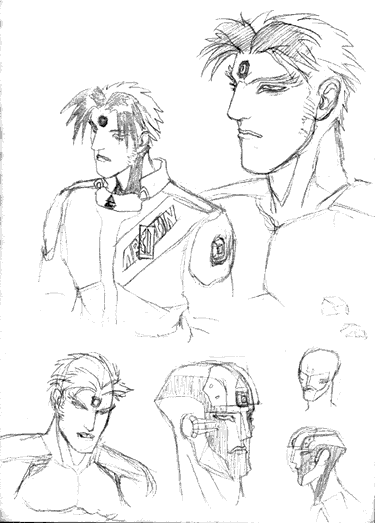
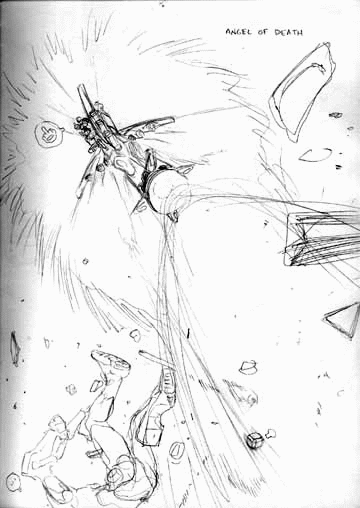
Like I mentioned before, there's sure a lot of these.
 It's probably for the best anyway... Exile looked like it could have been a rather
big
setting, encompassing a large region of space, so it's good to have a lot of character options. And a lot of factions to cause trouble with...
It's probably for the best anyway... Exile looked like it could have been a rather
big
setting, encompassing a large region of space, so it's good to have a lot of character options. And a lot of factions to cause trouble with...
•Common Weal•
PDF Draft posted:
The Syndic of the Common Weal is a dedicated adherent to the founding treaty of the Pactum Weal. This collection of worlds has upheld the standards and ethics of the Pactum Weal even after the disruptive rise of the Pax Republica.
The Common Weal has existed for millennium, and has prospered; flourishing on a large number of worlds, becoming in their time, the greatest colonialists of the Hegemony. Unfortunately, their belief in large families and multiple brood births has lead to their worlds overpopulation.
PDF Draft posted:
The Aristos pursue lives of comfort and pleasure, valuing wealth more than glory. The practice of taking multiple spouses and lovers is practiced by both males and females in the Weal. While it is illegal for anyone of the underclass to have more than three spouses, this law is difficult to enforce.
 In any case, you can probably figure out how the rest of this goes. Arrogant, aristocratic, and somewhat inbred... there's a lot of connections between them and the leadership of the Armada as well. Their greatest secret is that they harbor a small population of
Virago
- individuals who received extensive treatments to become effectively immortal. This is in flagrant violation of Hegemony law, and it's only their political clout and closeness to the Armada that keeps them from falling under suspicion. Although it's quite possible many of the other Syndics are controlled behind the scenes by the Virgao as well, and help deflect suspicion...
In any case, you can probably figure out how the rest of this goes. Arrogant, aristocratic, and somewhat inbred... there's a lot of connections between them and the leadership of the Armada as well. Their greatest secret is that they harbor a small population of
Virago
- individuals who received extensive treatments to become effectively immortal. This is in flagrant violation of Hegemony law, and it's only their political clout and closeness to the Armada that keeps them from falling under suspicion. Although it's quite possible many of the other Syndics are controlled behind the scenes by the Virgao as well, and help deflect suspicion...
•Pax Republica•
HTML Draft posted:
This relative newcomer to Hegemony politics was born during the Ongzer Rebellion almost 200 years ago. Organized by youthful intellectuals and idealists among the head count of Trinary, the revolution shook the Hegemony to its very foundations and resulted in sweeping changes throughout the galaxy.
The Ongzer Rebellion found its roots in the oppressive Virago oligarchy which ruled the Hegemony for millennia. The rebels rose up as one and executed every last immortal and royal official they could get their hands on.
Though in danger of crumbling at any moment, the rebellion was sustained by its leaders' cleverness and passion. Word and ships spread quickly to nearby systems, frightening the existing gerentocracies into flight. Brutal but decisive victories placed the revolutionaries in the position of Syndic founders in a few weeks. By the time these rebels-cum-diplomats arrived at the Hegemony Senate on Diadar, they represented nine star systems.
<<< It's amazing such widespread bloodshed was not stopped by the Hegemony's military forces. I can see something like that out here, but there in the Core Worlds? Just goes to show that the Hegemony isn't as omnipotent as a lot of folks think. >>>
 While they didn't really succeed the plot was effective enough at its main goals; the immortals who ran the Hegemony were executed and the Hegemonic Council was forced to pass laws that banned anti-aging treatments. While the revolution gained them a great deal of respect from the underclass, it didn't last very long... toppled within a few years by a new revolution, and again, in bloody purges. Eventually, the Republica that remained in control became a corrupt ruling class themselves, and while they have traditions of equality there's a lingering hypocritical power-mongering controlling bent in the leadership of the Republica. While they're still a strong power in the Hegemony, most of the other Syndics consider them dangerous and murderous idealists.
While they didn't really succeed the plot was effective enough at its main goals; the immortals who ran the Hegemony were executed and the Hegemonic Council was forced to pass laws that banned anti-aging treatments. While the revolution gained them a great deal of respect from the underclass, it didn't last very long... toppled within a few years by a new revolution, and again, in bloody purges. Eventually, the Republica that remained in control became a corrupt ruling class themselves, and while they have traditions of equality there's a lingering hypocritical power-mongering controlling bent in the leadership of the Republica. While they're still a strong power in the Hegemony, most of the other Syndics consider them dangerous and murderous idealists.
•The Consortium•
PDF Draft posted:
Trade and Artifex are the engines of the Hegemony; the blood and bone that bind it together. All Syndics engage in trade in one form or another and almost all utilize Artifex, but no other Syndic has become as integral a part to Hegemony finance and well being as the Consortium.
The Consortium has become such a key figure in the galactic economy that if it were to fall, it would most likely take the entire Hegemony with it. By being the primary loan agency to a vast majority of the great Syndics and producing over 60% of the manufactured goods within the Hegemony they can exert great influence over the Inner worlds and beyond.
The Consortium owes this dominance to its intimate relationship with Artifex. Among all of Humanity, only the Consortium are fully qualified to manufacture Artifex. Only the Consortium understands the many layers of robotic nuances and the exact processes required to create new Artifex and lodes.
 Instead of being cunning and greedy sorts (see the Cartel in a moment for that...), the Consortium are typically precise and calculating, working together in careful organization rather than risking individuality, sort of
high frequency trading
in social form. Part of this is their closeness to the Artifex, the intelligent machinery ubiquitous to the Hegemony, but also because almost all of the Consortium is staffed by engineered clone lines. There are still individual variations, but the different lines and families are created with specific traits desirable to their intended business function, and every member of the Syndic is implanted with a
Super Ego
lode in their forehead, a gem-like device that shares their experiences and memories with their peers, allowing for rapid and unified response.
Instead of being cunning and greedy sorts (see the Cartel in a moment for that...), the Consortium are typically precise and calculating, working together in careful organization rather than risking individuality, sort of
high frequency trading
in social form. Part of this is their closeness to the Artifex, the intelligent machinery ubiquitous to the Hegemony, but also because almost all of the Consortium is staffed by engineered clone lines. There are still individual variations, but the different lines and families are created with specific traits desirable to their intended business function, and every member of the Syndic is implanted with a
Super Ego
lode in their forehead, a gem-like device that shares their experiences and memories with their peers, allowing for rapid and unified response.
Despite this, there's still a lingering drive for individuality. The dress codes and regulations in Consortium regions are strict, but members often go out of their way to adopt unique appearances and demeanors when off duty, and tend to follow chaotic fashion trends and hedonistic hobbies.
•The Cartel (Versa Componae)•
HTML Draft posted:
<<< These individuals do not appreciate being called, "The Cartel". Instead they refer to themselves as the "Versa Componae" meaning , "Silent Family". >>>
Two things form the basis of the Versa Componae, greed and fear. Greed is for the members, fear is for those who are not members.
Greed.
In order to understand the "Cartel", you have to understand money. What must always be remembered is that we are, at heart, business people. In many respects we resemble the Consortium, loaning money and minding legitimate businesses. But, our desire for wealth surpasses the lust of any other Syndic. Our members will take advantage of every opportunity to increase their monetary wealth and crime is a justifiable means to an ends. In our world, money is power. And power is life.
Fear.
This aspect is simply about control. Who has it, and who doesn't. Fear is merely a tool to achieve control. Without control there can be no money. Without money there can be no power. And without power, life is worthless. Therefore, we must use fear if our efforts and our lives are to be preserved and rewarded.
•Zae Zarandt•
PDF Draft posted:
Of all the religions of the Hegemony, few are as far ranging and widely accepted as the monks of the Zae Zarandt. Once a faction of philosophers on Diadar, they abandoned the linear logic of their fellows and sought their own path; a path of spirit and introspection intended to elevate them to the next step of spiritual evolution.
They equate the concept of spirit to life itself, seeing a complicated web of connectivity between all living things. They study this theoretical pattern in the form of a game of glass beads known as Quo. Through Quo the Zae gain wisdom and insight into human behaviour. To many, Quo seems to be nothing more than a confusing ritual, a game with no perceptible beginning or end. The game is studied intently by many throughout the Hegemony, especially among the Consortium who seem hard pressed to completely understand its nuances. In actuality, Quo is a working model of the evolution of life, from it's most basic levels to it's eventual outcome: the spiritual epiphany of humankind.
The Zae say the first game of Quo ever played, has never stopped, that the game continues on through time, on through the Zae Zarandt. Much of the Zae Zarandt life revolves around the game. It is a mental exercise and a tool for meditation. Great spiritual revelations can be achieved when contemplating the movements on the board.
 Considered eccentric by most of the other Syndics, the Zae Zarandt welcome new acolytes... though few actually make it through the torturous physical trials of Zae-Dun, their martial meditative art. They also forsake personal wealth, the use of drugs and intoxic-
Considered eccentric by most of the other Syndics, the Zae Zarandt welcome new acolytes... though few actually make it through the torturous physical trials of Zae-Dun, their martial meditative art. They also forsake personal wealth, the use of drugs and intoxic-
PDF Draft posted:
Many bodily needs can be met through the Zae's deep meditations; fasting, metabolism control, or auto-erotic sexual release.
 Well, anyway. They also avoid the use of technology wherever possible, with many only ever using ships to travel infrequently, or grudgingly making use of an Ulster to survive on a station. Due to their reclusive and meditative habits, the Zae Zarandt are actually well-respected by the other Syndics, if mostly because they don't pose any appreciable political risk. Adherents are spread across the Hegemony and the Grange, and it's not clear if there's any real leadership at all.
Well, anyway. They also avoid the use of technology wherever possible, with many only ever using ships to travel infrequently, or grudgingly making use of an Ulster to survive on a station. Due to their reclusive and meditative habits, the Zae Zarandt are actually well-respected by the other Syndics, if mostly because they don't pose any appreciable political risk. Adherents are spread across the Hegemony and the Grange, and it's not clear if there's any real leadership at all.
•Voidians•
HTML Draft posted:
<<<The stars are alive, after their fashion. You and they share a common origin, the Void. See the seed of the stars within you. See face of the Void swimming under the Deep.>>>
Self-described as purveyors of mystery and the unspeakable, the Voidians defy attempts to classify them simply. Depending on who you talk to, they are scientists and priests, witch doctors and cosmologists, charlatans and oracles. On starships everywhere, the Voidians lead their inscrutable ceremonies, providing themselves and their crews with the enigmatic truths of !space, the map of stellar threads, and the unimaginable commandments of the Void Itself.
<<<VOID: a complex philosophical concept which is rarely defined and is usually represented as the primal, incomprehensible vastness of empty space, nothing and everything. Center of the Voidian religious system. See also: universe, universal unconscious, It.>>>
Rather than being overtly religious, the Voidians hide their spiritualism in scientific terms, with strange math and unusual quantum physics equations that point to "stellar threads", lines of space-time that twist connect the stars and create an elaborate three-dimensional megastructure that the adherents consult for navigation... and prophecy. They believe that attempting to perceive the truth only distorts it further, and
They have little direct political power as a group, but it's nearly impossible to work within the grange without meeting adherents. Something about working in the far reaches of space seems to draw people to their way of thinking...

•Trancers•
HTML Draft posted:
We are the Trancers. We are the future.
Despite the best efforts of the authorities, our music has become the voice and mind of the young. We shape and we form the minds of tomorrow into our mind. The mass mind. The One Mind.
We were born upon Diadar less than eight years ago through the marriage of Pseudo Sensory Technology (Trancer Caps) and Trance music. Ours was a generation captured by purity and sound. Our music and visions spread quickly throughout the Hegemony from the highest minds to the lowest hearts. We burned too bright, such startling popularity was bound to draw the attention of the authorities. When questions of the potentially subversive nature of our Vibes arose in the Hegemonical Council, our founders were banished and our Gear was outlawed.
Many do not survive the Grange. Yet we have done more than survive, we have flourished. That which was meant to destroy us, has only made us stronger. Banishment validated our image as rebels thus enamoring the next generation with our ideals. Now our tide is felt throughout all worlds.
 The Trancers inspired people to question the doctrines of the Hegemony, and some suspect they've done more to push the idea of rebellion more than the centuries-old purges of the Pax Republica ever did. They hope that through hedonism and spiritualism that people will be inspired, and that humanity will reach a new Renaissance that shatters the status quo.
The Trancers inspired people to question the doctrines of the Hegemony, and some suspect they've done more to push the idea of rebellion more than the centuries-old purges of the Pax Republica ever did. They hope that through hedonism and spiritualism that people will be inspired, and that humanity will reach a new Renaissance that shatters the status quo.
A few Trancers remain on Diadar, but the ones in the Grange were into it before it was cool.
 As an almost purely Exile movement, the Trancers have no power in the Hegemony but are a major cultural force within the Grange, even if they have few actual allies outside a few sympathetic members of the Pax Republica and Cartel. And yeah, this is pretty much pure peak-90's Anarch-style White Wolf non-faction, but it actually kinda fits into Exile well especially considering the Hegemony's relatively tight control on culture and information.
As an almost purely Exile movement, the Trancers have no power in the Hegemony but are a major cultural force within the Grange, even if they have few actual allies outside a few sympathetic members of the Pax Republica and Cartel. And yeah, this is pretty much pure peak-90's Anarch-style White Wolf non-faction, but it actually kinda fits into Exile well especially considering the Hegemony's relatively tight control on culture and information.
Next time : We're done with the Syndics! But there's a whole lot of other setting information to go!
The World(s) of Exile
Original SA post Mark Rein·Hagen's Exile
Mark Rein·Hagen's Exile

•Part Six: The world(s) of Exile•
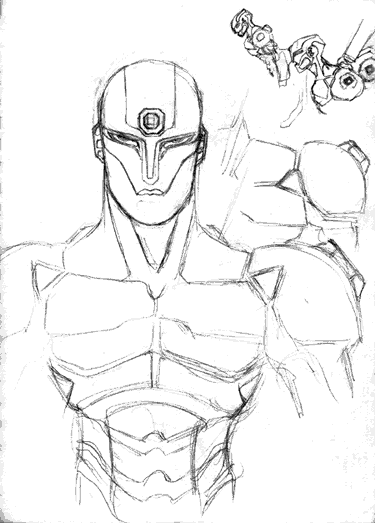
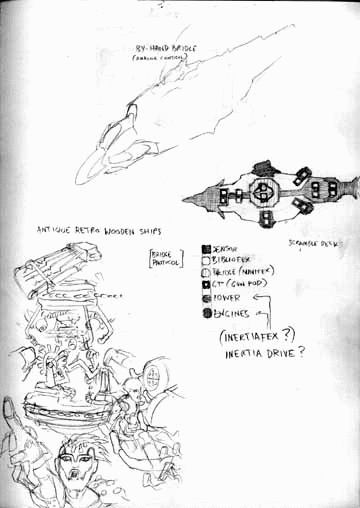
While the Syndics are a major part of the setting, defining the political blocs that influence the Hegemony and the Grange as well the origin and skill sets of player characters, it obviously takes a lot more than that to make a setting. Unfortunately, there's a lot of differences between the drafts here, but I'll try and put forth something presentable and coherent.
 Also note the quotes from the drafts in this review have a lot of spelling errors... which, you know, makes sense. I've only edited them where there were words stuck together or it's otherwise difficult to read.
Also note the quotes from the drafts in this review have a lot of spelling errors... which, you know, makes sense. I've only edited them where there were words stuck together or it's otherwise difficult to read.
•The Pactum Weal•
PDF Draft posted:
The Pactum Weal is the ancient treaty between the Syndics that lead to the formation of the Hegemony. This union of Syndics is the largest government in the galaxy. The Hegemony is comprised of over 700 star systems, and nearly 2,000 inhabited planets. The total population has never been calculated, but is assumed to exceed 100 trillion people.
•The Hegemony•
PDF Draft posted:
In the fourth Aeon, the Hegemony is supreme amongst Humanity. It is both government and culture. A way of life and a stabilizing force. The Hegemony is the shining light of civilization that shields its citizens from the nightmares of space. It nurtures, it protects and it commands.
Almost all the Hegemons are individuals of fantastic wealth, personal power, and political might, as befitting someone who controls the entire population of a planet. 1700 years ago, the Hegemony adopted a policy that required Hegemons to relocate to Diadar in order to separate them from their people, bathe them in the opulence of the capital, and ensure their loyalty to the Syndics and the Hegemony.
•Diadar•
PDF Draft posted:
The crown jewel of the old regime is a modern paradise. Every want is granted, every hunger sated. There is no poverty, no crime, no hunger. Money is pointless, on this, the richest of worlds. An exotic and bountiful resort planet, Diadar is breathtakingly beautiful, endlessly entertaining and populated by slaves who seek only to serve your desires. It is the pinnacle of existence for mortal mankind.
There is no disease and no sickness on Diadar . There is no death on Diadar. At least no lasting death. Temporary death is remedied by squadrons of medical Artifex who are never more than a few scant minutes away. Duelling, while sanctioned within the Hegemony, is forbidden upon Diadar itself.
•The Virago•
HTML Draft posted:
<<<(Monzon Ezut speculation) We know that life extension and even immortality are theoretically possible, but if the artifex remember how it's done they won't tell us. Are there springs of strange, irradiated water, as the legends say? Are there ancient "miracle machines" buried somewhere in the ruins that will ensure immortality? Do you have to make a deal with the Scourge or the Anathema? Historical evidence that Diados's "invulnerability salve" really can introduce benign nano processes into a living organism (or could before Diadar was terraformed) indicates that there's a precedent for stranger things.>>>
•Cognates•
Clone "families" within Trinary. Some have hundreds or even thousands of members derived from the genetic materials and memories of a single individual, and many survive for centuries at a time. The process is of questionable legality, but having a clone line is how many of the wealthy achieve effective immortality while circumventing the anti-Virago laws. It's possible for individual clones to achieve legal independence, either voluntarily, or... you know, through that Exile thing.
•The Godhead•
HTML Draft posted:
You've heard of it your whole life, as both the all-knowing benevolent father of the Hegemony and the boogy man who knows all your secrets. The truth is, it's all that and more. The Artifex form a huge network of information. And constantly exchange data, both when we're looking and when we're not.
Bibliotechs are at the hub of it here in the Grange, but there are huge clusters of lodes on every Hegamony world where massive information exchanges take place daily. The true Godhead may be on Diadar, but its eyes are everywhere. Your Fex are constantly watching you, and you never know what they'll talk about with other fex and what will eventually get back to the Godhead.
<<< If your going to discuss something important, unplug your fex. >>>
The name isn't entirely White Wolf melodramatic terminology. The Godhead is sapient .
Not in the way a human would recognize, mind you. It has thousands of individually intelligent cores, each in instantaneous sync. But it has a single will , and through it the Hegemony is run, regulated, overseen, and controlled. Even the Syndics probably do not quite realize the full scope of its information control, as the only individuals who ever communicate directly with it are Solons , the most advanced and intelligent Artifex.
•Citizenship•
Service guarantees citizenship.
 The majority of people within the Hegemony are not technically citizens and lack assorted legal rights such as "cannot be summarily executed by the authorities for no reason at all". Slavery is legal as well, though slaves are almost invariably pulled from the underclasses or the Grange. Naturally, citizenship is a rather coveted sort of position.
The majority of people within the Hegemony are not technically citizens and lack assorted legal rights such as "cannot be summarily executed by the authorities for no reason at all". Slavery is legal as well, though slaves are almost invariably pulled from the underclasses or the Grange. Naturally, citizenship is a rather coveted sort of position.
•Exile•
On the downside, if a citizen fucks up really bad the authorities could do this instead of the execution thing. It can happen to non-citizens who only fuck up a tiny bit, or who get unlucky enough to piss off the wrong sort of person.
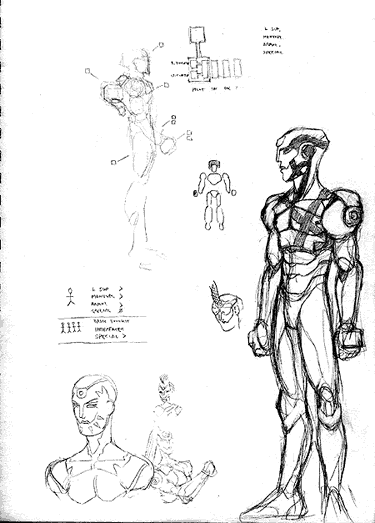
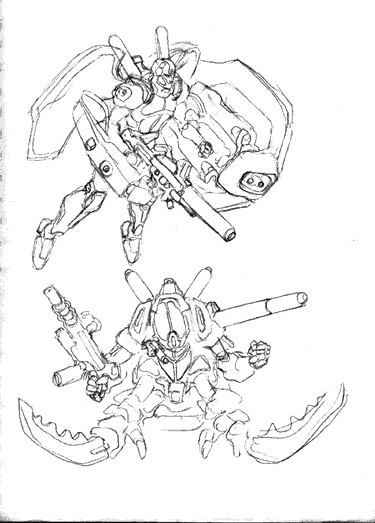
•Space Travel and Null Space•
PDF Draft posted:
Travelling between solar systems is accomplished by plunging spacecraft into stars. This risky process is known as Stardiving. The combined effects of extreme amounts of energy and gravity allow for hyperspace travel. The actual experience of Stardiving has been described as a hyperlight stage of total mindwarp in which the illusion of reality is often shattered by your own consciousness. There are bizarre reports of unexplainable phenomena that pop up only to be suppressed by those who know better than to believe such foolishness. Whatever you believe, no one ever forgets a dive.
While jump drives are not exactly the most unique sort of setting conceit, traveling between the stars with an "Icarus Drive" is a unique type of... harrowing, seeing how it's works through literally plunging into stars.
 However, FTL requires slipping through
Null Space
, the cracks between the stars that exist somewhere outside of space and time. In some ways it's as much a spiritual experience as a physical one, and only human pilots can successfully stardive. Even with Hegemony technology, Artifex and other automated systems cannot successfully complete the journey.
However, FTL requires slipping through
Null Space
, the cracks between the stars that exist somewhere outside of space and time. In some ways it's as much a spiritual experience as a physical one, and only human pilots can successfully stardive. Even with Hegemony technology, Artifex and other automated systems cannot successfully complete the journey.
While stardiving is the quick route, there's more traditional sorts of travel as well. Ion drives, Toroidal Fusion Thrusters, and other sorts of engines are commonly used in the Grange, and they can reach relativistic speeds in only a few hours. These aren't really practical for anything more than in-system travel, or short jaunts of a few light years.
Combat in space happens on fairly "realistic" levels, typically with high powered lasers at rather long distances since ion weapons are too easily deflected by magnetic fields and even the best railguns have too long a travel time hundreds of kilometers out. The usual tactic is that the weaker ship attempts to get close in order to maximize the power of its weapons or to try and find the angles where the enemy can't bring most of their weapons to bear, while the strong ship attempts to keep their distance. All ships typically mount magnetic shields in order to deflect debris, but warships can be found with far more potent variants that can absorb and deflect energy weapons as well. Of course, these also tend to contain the heat of the engines inside them too...
•The Ulster•
HTML Draft posted:
Your Ulster is your friend. There is nothing, nothing at all more important that it when you are in space. Your priorities are: 1. Breathing and 2. Know Thy Ulster.
(...) Your Skin2 lets you keep your warm wet animalness alive pretty much anywhere, and it has an infinite number of clever functions as well. The Skin2 is literally that: it coats you like a layer of paint. A flexible, extremely tough paint that recycles your waste, blocks cosmic radiation, super thermo-insulates against heat and cold, performs basic first aid should you need it, and can play host to an endlessly diverse number of accessories from strength-boosting exo-skeletons to built-in entertainment systems, to weapon holsters and mounts. (Don't let an Artifex find out what that plasma-thrower hardpoint is for though -- they'll 'fix' it trying to look after your best interests.)
•Way Stations•
HTML Draft posted:
Oases in space, the Waystations are the centers of civilization and commerce in the emptiness of the void. Be glad they're there because you'll be spending a lot of your time at Waystations. They run the gamut from megalithic asteriod clusters, to converted derelict spacecraft, or the vast cylindrical orbitals of the Hegemony. They serve one primary purpose: trade, serving as the center for interstellar commerce above a colonized world, but large numbers can be found alone in a barren system. Star-faring peoples such as the Starborn and the Trade Guild factions of the Consortium rely on the Waystations to do their business and resupply after years spent plying the starways.
HTML Draft posted:
There are a huge variety of Way Stations in the known Galaxy. Most in the inner worlds are the terminus of Umbilicus, but many in the Grange are little more than shantytown collections of ships and asteroids bound together with cable and flextunnels.
•Terminus -- These Way Stations are the official domain of the Hegemony, and are protected with the might of the Navy and guarded by elite members of the Legions. Security is very tight, and some ships may be quarenteened from anywhere for a week to 6 months. However, supplies are plentiful and usually inexpensive, and most of the Franchises are represented.
•Ports-o-Call -- Owned and controlled by the Syndics, these Ways Stations typically served as colonial capitals in the Grange. They are often the headquarters of a Viceroy, and the home port to many merchants, privateers, and battle cruisers of the Syndic. Though all ships are welcomed at Syndic station,
•Favellas -- Sometimes owned by no one, this ragtag collection of vessels is often the only way station to be found in the Grange. All are welcome at these Stations, as long as they have mass to spend or trade.
•The Freeworlds•
Not everyone in Exile is forced into it. Sometimes groups of colonists accept it voluntarily, trading away the benefits of Hegemony life and Syndic membership in order to have freedom or speech or religion on their own private utopia. Freeworld groups are often wealthy and well equipped, and not against co-oping any local population into their particular government.
Of course, the majority of such colonies typically collapse into feudalism or violent anarchy within a few decades, and often have their fertile and promising worlds recolonized by a later group. The few Freeworlds that survive are usually the ones with colony groups that focused on escaping the Hegemony in desperation rather than following some untenable political ideal.
•Indigenous Cultures•
HTML Draft posted:
Don't forget, you aren't just facing Hege outcasts; the local population out here can be truly twisted. It's best not to go messing with the locals unless you can at least identify their type. You might want to avoid them altogether, as many of the gene-twists out here are far less natural than plain exotics.
•The Anathama•
HTML Draft posted:
This is all as it happened. I am the veteran of seventy years and until forty-eight hours ago I believed that I had seen death in all its forms. As a Bak-Sakusa I feared nothing, yet the beings that lurked in that devastated Horde base, the ones that blasted the minds of our scouts and poured out of the depths into my men... I knew fear for the first time. Never have I heard screams like the ones I heard then -- I turned and boosted myself towards the dock bay exit in a frenzied panic.
My retinas were filled with the transmission of my men's tactical holography. The images revealed nothing, they were fighting with shadows that struck like monoblades. Each was enveloped in blackness just before their screams ended and the telemetry cut off. In the darkness warriors fought each other in their panic. I tried to gather as many men as I could and made a course for the cargo bay airlock.
Though I will attempt a complete description of what I saw, Council, I must admit that I am loath to recall it. Pouring out of the access hatches onto 400 seasoned fighting men were abominations that twisted my mind with terror. The things moved with a translating translucent slickness, invisibly stretching their ridged and wet forms onto more dimensions that we ever see. They engulfed my terrified men who tried in vain to damage them with their weapons. In the instant I was transfixed by the nightmare vision I realized though the blades and coherent light had no effect on the horrors, particle beams did drive them back temporarily.
 Not human, and more important, never
were
human. Possibly not even native to this universe. They're not officially acknowledged by the Hegemony, but because they were mentioned as rumor in the corebook we can safely assume they're real and will probably try to murder the PCs.
Not human, and more important, never
were
human. Possibly not even native to this universe. They're not officially acknowledged by the Hegemony, but because they were mentioned as rumor in the corebook we can safely assume they're real and will probably try to murder the PCs.
•The Rest•
There's a... lot of detail in the HTML draft about the sort of lives Exiles lead, little customs and terminology, assorted Exile holidays and popular entertaining, ways to select a crew and maintain a ship, and other things that I'm not quiiiite sure how to translate for a review here since much of it's done in conversational tone and often only up a sentence or two long. In any case there's a lot more than I really have room for here, but I figure if you're interested in the game you can just check that out yourself, and if you're not then there's no reason to just copy-paste walls of text here. Sorry.

Next time : Rules! There are actually some, really!
The Rules of Exile
Original SA post Mark Rein·Hagen's Exile
Mark Rein·Hagen's Exile

•Part Seven: The Rules of Exile•
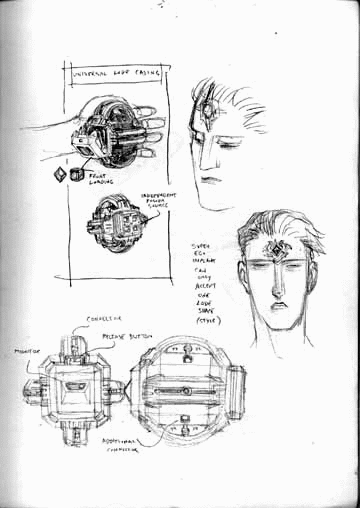
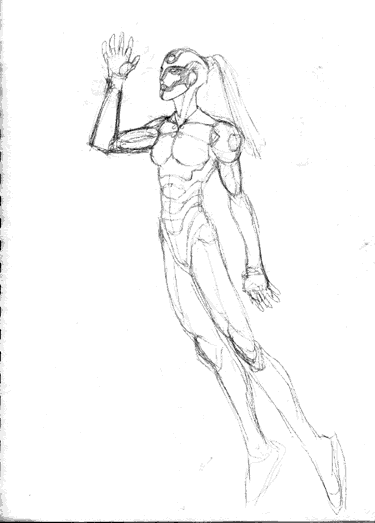
Interestingly, while the HTML draft has a lot more in the way of setting material and fluff, it doesn't actually have any rules beyond a brief section of equipment with stats. The PDF draft on the other hand has summarized playtest rules, but the setting material is much briefer and stated in direct OOC phrasing. I get the suspicion that they were actually different potential parts of the same final book; a lot of White Wolf games have the first half be IC-style setting description and the rest be stating things in frank terms to the players and GMs, and this seems to fit the pattern. The only trick that comes in is that the two seem to be from different stages of development, with a few changed or contradictory pieces of information. Ah well.
In any case, every quote here will obviously be from the PDF draft.
•The Game System•
Good news! Exile doesn't use the Storyteller system!
 Thank fucking god, it was still a bit of a wreck in 1997. The default assumption is that characters succeed
automatically
on most tasks. For tasks ("challenges") where a roll is necessary you still get to put those piles of d10's to the task... but thankfully, as d100's instead. You need to roll
under
the target number, usually the trait in question, but the higher the roll is without exceeding the target number the better you succeed in what I shall dub the "Price is Right" mechanic. Since Null-f inherited White Wolf's hatred of intuitive probability, particularly complex challenges may require you to roll against two (or more!) different traits. If you only succeed at one roll, the success is halved (or thirded, or what have you). If you lack the appropriate skill, the target number is your base stat times ten, and the game master narrator by assign a 10-30% penalty to difficult rolls.
Thank fucking god, it was still a bit of a wreck in 1997. The default assumption is that characters succeed
automatically
on most tasks. For tasks ("challenges") where a roll is necessary you still get to put those piles of d10's to the task... but thankfully, as d100's instead. You need to roll
under
the target number, usually the trait in question, but the higher the roll is without exceeding the target number the better you succeed in what I shall dub the "Price is Right" mechanic. Since Null-f inherited White Wolf's hatred of intuitive probability, particularly complex challenges may require you to roll against two (or more!) different traits. If you only succeed at one roll, the success is halved (or thirded, or what have you). If you lack the appropriate skill, the target number is your base stat times ten, and the game master narrator by assign a 10-30% penalty to difficult rolls.
Also,
quote:
All traits in this game have a percentile rating from 1 to 100. A characters score can be considered the percentage of human maximum they possess in that particular trait. For instance, a character with an 84% Reason, can be assumed to be in the top 16% of individuals in regards to raw intelligence.

In any case, when you succeed you take the "tens" digit of the roll and have that many success points , giving people with higher traits much better successes as well as better chances. If you get exactly the target number you get a critical success and can roll again, combining the total success points (if any extra; the second roll can't harm you). You can burn success points to...
quote:
• Movement: you are allowed to take some sort of simple extra physical action, such as walking or running, in addition to your basic action. . Cost: 1 to 3 pts. You define what you want to do, and the Storyteller tells you if you succeed.
• Defence: You can apply your successes to your own defence in combat, thereby taking away the successes of one attacker by the same amount.
• Special FX: You use your successes to make your action special in one way or another, anything from striking your enemy between the eyes to scoring a particularly salient political point in a debate.
• Add to Next Roll: You always have the choice to save your action pts till your next roll. If you make the roll, add up all the action pts, however, if the next turn you fail your roll, all the successes you saved are lost.
Overall, these basic mechanic aren't... that bad? A little more complex than they need to be, but at the same time they seem to be a lot simpler than Storyteller and have a wide range of potential results without being too difficult to interpret. I'm not really sure the game needs that range of results, but I've certainly seen worse.
•Exhaustion and Malaise•
Exhaustion comes from physical fatigue and harm; if it reaches 10 you pass out, and it goes away as you rest. Malaise comes from metal stress and fatigue, or when you use your Memes (... we'll get to those a bit later); if it reaches 10 you basically have a mental collapse, and it's removed by meditation, carousing, and other cathartic activities.
• Character Generation •
•The Troupe•
In other words, the party. Basically it goes into a little detail about how the group should be connected in some thematic way, either by Syndic, by Family (or Cognate...), by background. Pretty obvious stuff, but good to reiterate I guess?
•Character conception•
Finally, chargen.
 To begin with, you need to pick through a few different things. An
origin
(a family outcast, an orphan, the clone of a hero, etc.), a
background
(an aristocrat, a bureaucrat, a famous celebrity, etc.), and the reason for your
banishment
(a crime, being
framed
for a crime, a personal disgrace where your family/Syndic just wanted you out of their sight, or just being of low status and picked at random to "support colonization efforts"...)
To begin with, you need to pick through a few different things. An
origin
(a family outcast, an orphan, the clone of a hero, etc.), a
background
(an aristocrat, a bureaucrat, a famous celebrity, etc.), and the reason for your
banishment
(a crime, being
framed
for a crime, a personal disgrace where your family/Syndic just wanted you out of their sight, or just being of low status and picked at random to "support colonization efforts"...)
•Affiliation•
Here's where the Syndics come in! The important thing with Exile is that it isn't a binary choice like a Clan or Tradition, but rather you pick five different Syndics, having a different sort of affiliation with each, and each type of affiliation having a different affiliation score. These are Champion (50%), Enemy (40%), Initiate (30%), Spy (20%), and Contact (10%), all fairly self-explanatory.
Honestly this is probably a bit overcomplicated, but it definitely explains why there's a wide variety of Syndics, why they often have overlapping members and goals, and why some of them barely qualify as "Syndics" at all. In addition...
quote:
NOTE: When you record your Syndic score, roll one ten sided die — the result becomes the one digit. Combined with the base index for each affiliation you create a percentage score from 11% to 59%. (you’ll do the same for Skills later on).
Like the Storyteller ones, they're rated from 0-5, though 0 usually isn't found on player characters. You get 18 points to divide between the
quote:
• Vigour: A general rating of physical stamina and strength. Applications of endurance and sheer physical force. Body tone and general physical health.
• Coordination: This trait describes the fine control a subject will have over his actions. Eye-Hand coordination, agility, and general dexterity can be ascertained by the use of this Attribute.
• Presence: The characters general appearance, demeanour and charisma — their social aptitude.
• Expression: The characters skill to communicate ideas and influence others.
• Reason: The pure strength of mind a Factor possesses, and the deductive and inductive intellectual powers which they can employ. Also Reason is the technical aptitude of the Factor. This describes his skill to deal with complex mechanical and/or technical tasks and situations.
• Intuition: This attribute describes the creative thinking and general sanity of a character. The degree to which they are aware of their surroundings is rated by this attribute. Also describes creative insights.

•Skills•
There are some! The level of affiliation with a Syndic tells you how many points you can spend in its skills (from 5 to 1, basically divide the base affiliation score by 10) and what skills you can choose from. Like with affiliation score you roll a die to get the ones digit of the final score. In addition to the stuff listed above you can burn successes on, you need to spend a certain amount of successes to define how well you succeeded at a skill check. In general 1 is "barely succeeded" and 5 is "I am the Moon". If the roll is contested, whoever gets the most successes wins. No, there's no mention of how to resolve ties.
•Memes and Drives•
Memes are "the clusters of ideas, ethics and visions of each Syndic which describe what hold them together as a group." You get three, picked from the lists of your various Syndics (yes, including the enemy one). These are something like a combination of Merit and Power, but also indirectly defining an aspect of personality kind of like how Nature and Demeanor did in V:tM. Every Syndic has three examples in the draft, but presumably the final book and any supplements would have had more. Some examples are...
quote:
• (Androgyne) Follow Your Bliss — Do all that you can do, experience everything available to you. Live Life to the Fullest. You get 1 extra experience roll each story.
• (Armada) Born to Lead — You believe that some people are born to be leaders and you are one of the destined. Indeed, you have a voice of command, and can double your successes on any Leadership roll by taking a Malaise point.
• (Consortium) Trust Your Cognate — The group is always paramount over the individual. You believe in this absolutely, and still consider yourself a full member of your cognate. Because you have faith in your
family, they still protect you and you will be granted one rebirth. When you die a new clone body will be provided free of charge.
• (Common Weal) The Will to Power — You have a powerful drive to survive, and seek to have life eternal. When you take a wound that would otherwise kill you, you can make a Vigour roll, and each success takes away a damage point. However each success always keeps you comatose for one day.
• (Trancers) Tune in, Turn on, Trance out — Join with the community, become one mind with the trancer caps. By wearing a trance cap and attending a Rave you can reduce your Malaise. Make a passion roll, the successes indicate how many Malaise Points you lose.
•Indulgences•
The "stuff" you start with. Being Exiled doesn't mean you're totally bereft of possessions, and even the disenfranchise can scavenge up or be granted some basic resources (it's exile after all, not a death sentence, and the Hegemony wants to give at least the pretense of a fair chance). You get seven rolls to represent the seven days you have left on Diadar before your exile, basically picking a skill or attribute and rolling a challenge against it as you try to get resources from your syndics. The narrator is encouraged to make each of these rolls a scene as you try to justify your challenge, but honestly that sounds like it'd get to be a colossal hassle in practice for a group of any size.
You get successes like usual and can burn them to buy stuff from the appropriate Syndic's list, like spacecraft, estates on a Grange world, a military commission, and other assorted things that will make your life significantly easier. However, a roll of 01 is a botch; normally this means forfeiting any remaining rolls as you're unexpectedly deported the next day, but at the Narrator's discretion you can just die it's a combat roll. There's a bit of Traveler in here after all!

•Logos•
Basically the freebie points from Storyteller chargen, stuff spent at the end to boost stats and such to make each character a little more unique. You get 20 points to start, and can spend them on...
quote:
Attribute - 5 Logos points per point (max 5)
Syndics - 1 Logos point per roll
Skills - 1 Logos point per level (any skill)
Memes - 1 Logos gives you 1 extra meme
Indulgences - 1 Logos point lets you re-roll, or take 3 successes
Drives - 1 Logos points per roll (can be used either up or down)
Hit Points - 1 Logos point lets you add one hit point to one hit location
Note: A roll indicates you get to roll a ten sided die and can the result to your index.
 You can also save Logos for post-chargen, but I'll cover that in a moment.
You can also save Logos for post-chargen, but I'll cover that in a moment.
•The rest•
Your Pathos is a d10 roll, although it's kind of a vestigial trait since it's mentioned solely in this note and in a single Meme. Your Reputation is 0, but is definitely a vestigial trait since literally nothing else mentions it. Your age is anywhere from 10 to 100 (people tend to live a long time in the Hegemony even without anagathic treatments), though most Exiles are young.
Naturally, there's a bit list of syndics, skills, memes, and all that sort of stuff in the draft. I'm not going to bother transcribing that here.
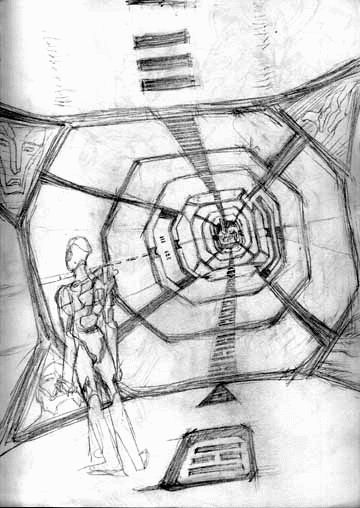
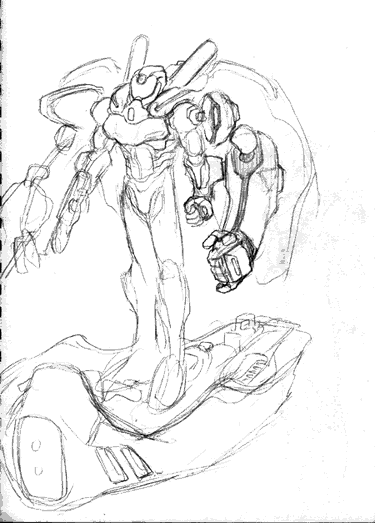
• Game play •
•Acuities•
Super-normal abilities available if you have the certain Memes of certain Synddics. Basically a sort of limited psychic ability; it doesn't work on Artifex or other mechanical or overly logical entities, for example. There's one tied to each attribute. Some examples are the Meditation of the Zae that lets you ignore the need for rest, food, or water on a successful roll (and possibly on consecutive days...), or the Diva of the Trancers that lets them erase malaise points if they lead a trancer event.
•Logos•
The good news: Exile has a "hero point" style mechanic. You can spend Logos to reroll a challenge (but only once), to add three successes to a roll, and similar things that help to mitigate the bullshit of random chance. You can also spend a point to do some dramatic editing of the scene, pretty much identical to similar mechanics in other games (like the later Adventure!). This is pretty nice!
Only problem is, Logos is lost when it's spent; you don't really have a regenerating pool of it. Fortunately you can gain more by following the intent of your Memes, but if you were saving some after chargen instead of buying permanent traits you probably fell into a pretty big chargen trap. But in fairness it is 1996 here, people were still experimenting with these types of mechanics.
•Drives•
The personality traits. Generally self-explanatory; Temper is how angry you are, Pride is how strong your self worth is, and Passion is how emotional you are. These play a big part in Reaction Checks ; in cases where you need to make an immediate, gut response, the Narrator might have you make an appropriate Drive check. These can be good or bad; a fearful moment might be a Temper challenge, with success letting you fight bravely and failure forcing you to flee, but if something that makes you enraged you'd only retain control if you fail the check.
In addition, successful use of social skills (Seduction, Leadership, and the like) on you can force you to make a challenge of the appropriate drive, again with positive or negative outcomes on success depending on the skill and circumstance. Succeeding on a Pride check after a Leadership roll means your fear is reduced, but succeeding on a Passion challenge after a Negotiation roll means you get greedy and give in to their offer, for example.
In any case, if you don't like the result you can take a Malaise point and roll a different Drive to try and counter the result. Allies can use skill checks on you similarly with no Malaise cost.
•Combat•
I'm nooot going to go into full detail here. Basically, every combatant gets to make a skill roll and take an action, and can take the action even if you fumble the roll. Everyone also gets three free successes they can spend on Initiative, Movement, or Defense, giving people who've failed their rolls some tactical options. And yes, Initiative is decided by how many successes you spend on it, and actions are decided at the start of the turn and counted down from highest initiative to lowest, so there's some trade off in how soon you strike versus how well you strike. There's also a whoooole lot of things to spend combat successes on, including basically all the fancy maneuvers (grappling, suppressing fire, etc.) that most games have. I think it's a pretty elegant means of handling these compared to the additional checks or unnecessary subsystems a lot of games have.
With damage, characters have health levels... although unlike Storyteller, it's divided between six locations, the head, torso, and all four limbs, each with different numbers of health levels; an arm has three, the torso has seven, and so on. The defender chooses where they're hit unless the attacker spends successes on choosing a location, and damage is determined by the weapon used (a flat non-random number) and is reduced by any armor or force fields. A limb reduced to 0 is disabled, and you're unconscious if the head or torso hits 0. If you're unconscious, any additional damage means a death challenge against vigor or fortitude.
Overall... it's not that bad really. No worse than Storyteller, but there's a lot more fiddly tactical aspects and it it doesn't have the same sort of death spiral effect.
•Experience•
These rules are... uh, incomplete. There's a few places where concepts are cut off mid-sentence, like some mentions of spending Logos for stuff but not saying how.
 In any case, the Narrator hands out 1 to 7 experience points, and you pick which traits to use them on, getting a roll for each point spend. If you succeed, you gain 1%. If you
fail
you can 2%, and an exact success gains 3%. I'm not a big fan of random chance rolls for character advancement since it can lead to long term imbalance, but this is a pretty elegant way of handling it; the better a trait is, the slower it increases. The section mentions "watching the levels of your drives" but there's no mention of how they'd ever decrease, and it also notes that Syndic affiliation can only be changed with RP.
In any case, the Narrator hands out 1 to 7 experience points, and you pick which traits to use them on, getting a roll for each point spend. If you succeed, you gain 1%. If you
fail
you can 2%, and an exact success gains 3%. I'm not a big fan of random chance rolls for character advancement since it can lead to long term imbalance, but this is a pretty elegant way of handling it; the better a trait is, the slower it increases. The section mentions "watching the levels of your drives" but there's no mention of how they'd ever decrease, and it also notes that Syndic affiliation can only be changed with RP.
• Final assessment •
Overall? The system is rather sparse but there's definitely enough to play a game with here if you really wanted, at least with some willingness to add extensive house rules to trim vestigial stats and make rules for edge cases. It's nothing exceptional , but moving to percentile dice removed a lot of the wonkyness that Storyteller had with its dice pool probabilities. The real problem that I can see (admittedly, without ever actually playing with it in practice) is that in many cases you're going to have a 50% or less chance of actually succeeding at all on a roll in a skill you haven't focused on, and that's just going to be frustrating a lot of the time. The early encouragement to have the Narrator only force rolls when it's absolutely necessary helps a bit, but in practice I don't see it helping this improving the situation in most games. The upside is that when you do succeed you usually wind up with multiple success levels to play with, and in most of the systems where constant failure would be problematic (like combat) you're given some automatic successes to distribute. Combat is very, very different from Storyteller due to this; it becomes a bit more tactical in how you plan your actions and spend your successes. In any case it's hard to really say how well the game would work without some actual playtesting; I suspect it's not a bad concept, but you'd want to tweak the chances of overall success versus success levels granted to even it out a bit.
As for character generation, I think that it's... functional but mediocre? It's kind of like Storyteller in that it's not horribly complex and there's a fair bit of flexibility in how you make a PC, but there's way too many random elements. Obviously that comes down to personal taste, but the rolls just seem to add unnecessary complexity and potential imbalances between PCs. There's also the Storyteller style problem of a big disconnect between chargen and experience costs... but experience is done differently enough that there isn't the compounding costs problem that lead to the dumb builds of early Storyteller games.
Next time : Closing thoughts!
Final Thoughts
Original SA post Mark Rein·Hagen's Exile
Mark Rein·Hagen's Exile

•Part Eight: Final thoughts•
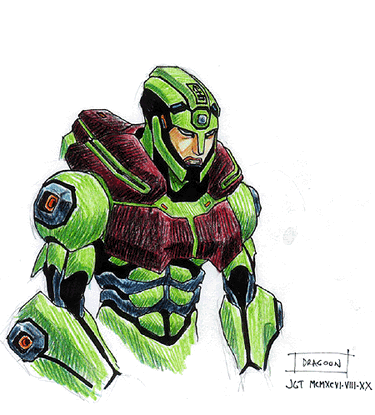
•The Text•
To be honest, it's hard to really give a fair review about Exile. What we have available is basically a first draft that was maybe total seventy or eighty pages at the most, clearly far less than the 200+ the final book would have clocked in at. The rules are very rough with several unused traits and a lot of character options given only basic examples to test with, and the setting was still being changed and expanded between the drafts. So with that said, I'll try to look at the good parts of the game and try and ponder how what's broken or missing could have been improved, since it's impossible to say what the final product would have included.
On the whole... I actually really kind of like Exile. It's full of 90's thematic conceits and some design that would be out of place these days, but I fucking hate classic Storyteller and for all of this system's flaws it's at least a lot more transparent. The overall setting themes are much "higher concept" than a lot of the sci-fi games that had been released until then too. It's not quite as heavy on transhuman themes as Transhuman Space would eventually be, and it lacks the sort of relatively hard sci-fi that something like Traveller had, but it's this odd mix of harder sci-fi themes, creatively done softer themes (I still love the "stardiving" conceit for FTL), and a sort of pervasive spirituality in the backdrop of an ancient but slowly decaying civilization that seems to get its influence from Frank Herbert or Larry Niven more than George Lucas or Gene Roddenberry.
The problem with the Exile drafts however is that, as mentioned earlier in the thread, they're very interesting themes but the setting information is focused on the wrong areas for the game. There's far, far too much attention given to the Hegemony itself and the Syndics, and once the prelude (and scrounging up your Indulgences...) is done the characters, pretty much by definition, won't exactly be interacting with it again directly. It's probably an inevitability of seeing the game this early in development; the Null Foundation wanted to make an entire game line out of the setting, and the characters ultimately would have lived the start of their lives in the Hegemony, so it only makes sense to give the core of the setting a lot thought and early attention to detail.
If you're only working with the draft though you're going to have to make up most of the setting for the Grange. The HTML draft has a lot of information on lingo, and small-scale customs and behaviors and the like, but it just doesn't give you enough information about politics in the Grange, major stations or political powers, and other stuff that's sort of critical to crafting a campaign. I'm not entirely sure this is something that would be sufficiently resolved in the final game too... it's quite telling that there's only two Syndics (the Bak' Sakusa and the Trancers) that are explicitly Exile-focused. Still, the fact character traits are defined by their interactions between multiple Syndics (and by extension, elements of the setting) is a really interesting way of handling traditional splats that I wish more games did.
I actually rather like that Null-F didn't see to include a "power" system like basically every White Wolf game had. The Memes (and the Acuities... which are bought through Memes) are maybe the closest equivalent, and even those tend to be a bit more subtle and focused; the closest equivalent in a contemporary White Wolf game would probably be the knacks from Adventure! , for example. There's a lot of ways to break characters, both good and bad, but overall everyone is on a roughly even level. Of course, a lot of attention is given to the Ulsters and spaceships and other essential technology, and everyone having powered exoskeletons does reduce the need for personal power crunch too.
As I mentioned last post, like the overall idea behind the rule system... percentile dice are pretty easy to work with, and the potential number of successes scaling with the chance for success makes for an interestingly escalating competency at higher skill levels despite the flat roll. Most of the problems really come down to how successes scale, since as it is many players would be looking at 50% or less chance of success on a particular roll, but that may have been something that the playtesting would have changed.
•Would I play it?•
Yeah, probably. It's incomplete and I pity the GM who'd have to flesh things out for the campaign, but there's a whole lot of worse themes and systems around, and if anything the 90's "spacepunk" concepts and visuals seem almost charming now.
•So what about Aeon/Trinity?•
This... is really the biggest piece of the story, and one of the things I know very little about. As I mentioned in the first post, Rein·Hagen left White Wolf in 1996 and took Null Foundation with him, while Aeon came out less than a year later in 1997. It's pretty clear that White Wolf was going to do a science fiction game one way or another, but at this point it's impossible for anyone but the people involved to say whether it was an argument over control over the game line, a break in creative intent, or personal company politics. Similarly, it's hard to say whether Aeon came about due to White Wolf making a game in their own style while trying to piece together scattered drafts and unused ideas, or whether Aeon was actually intentionally rushed in order to undercut Null Foundation. Whatever the case, Aeon actually got released while Exile didn't.
There's a few things that help to give some hints to the behind the scenes development. One is how the first edition of Aeon had almost the exact same esoteric printing format that the draft wanted for Exile; a spiral bound, black-covered book with only a logo prominently displayed. It's clear it inherited a bit of Exile's intended design there, but that may just have been the affectation of some particular staffer who remained at White Wolf after Rein·Hagen left. Then there's the Null Foundation itself... my sneaking suspicion is that Rein·Hagen wanted a lot more creative control or felt the company wasn't working in his interests, and having the game done in a "non-profit" organization in his name let him keep the rights when he finally left. It's telling that the organization got converted into a for-profit company a few years after Rein·Hagen split from the company, even if Atomoton only made a single failed product before closing.
Whatever the politics, Aeon/Trinity was ultimately a... very different game. I can't speak for everyone, but for a while there Exile was kind of a big deal in the online gaming/usenet community due to being "the next big White Wolf thing" even if the interest eventually fizzled once it became clear the project was going nowhere. Considering those expectations for a high-concept setting, Aeon was kind of a poor substitute. It's not a bad game but it definitely was much smaller in scope, quite a bit less experimental, and had very little in common thematically.
For those who aren't familiar with it, a quick summary would be that the player characters are the psychic agents (Psions) of one or more government or corporate organizations during the rebuilding after a catastrophic world against cosmic-powered superhumans (Aberrants). It's almost entirely focused around Earth and the solar system (to the point that the warp-capable psychics have fled for... reasons before the game begins), society is in an overall state of regrowth and rebuilding rather than a decline, and the characters are generally presumed to be well-supported and well-trained agents rather than outcasts and, well, exiles. It used a variant of the Storyteller system (probably the initiator of the branch that Exalted would later use, rather than the later NWoD's), the characters are tightly tied to their single splat (to the point that it's incredibly difficult to use powers from other splats), and where Exile kept to a lot of WoD themes while drastically changing the mechanics and metagame, Aeon changed a lot of themes while being very conservative with the mechanics and overall design.
If I had to pick between the two, I really sort of wish Exile had got completed instead. On the other hand, Aeon eventually lead to Adventure! which I'd argue is the best game White Wolf ever did and one of the best RPGs in history, so it's hard to really hold too many regrets.
•The Art•
I'm not gonna lie, I love Timbrook's stuff and I'm kind of sad the game never released with more proper finished art rather than low-resolution concept sketches. I used a lot of the Timbrook pieces that were up on archive.org throughout the review, but I didn't get to use the majority of pieces. Most of these sketches are unusably low quality these days, but it's still some design work that would otherwise have been forgotten and helps to get across a bit of the feel of the characters and technology, so I threw it all the images I could find into an imgur gallery. Enjoy!
http://imgur.com/a/ILkzi#4
•The PDF draft•
What, you thought I'd leave you hanging? Between this and the playtest draft on archive.org you'll have everything I know of that still exists from the playtest. Yeah, I guess it's technically
 but it's for a publicly released document for a game that never got released by a company that no longer exists, so I'm
pretty
sure nobody will care.
but it's for a publicly released document for a game that never got released by a company that no longer exists, so I'm
pretty
sure nobody will care.
The downside is I'm not quite sure of the best way to share this, so here's a bunch of file sharing links for places that hopefully aren't too virus-ridden.
 You're probably best off trying the onedrive one first, though I have no idea how long that will last. If they're all dead in a month or two just give me a PM or something and I'll just email it to you.
You're probably best off trying the onedrive one first, though I have no idea how long that will last. If they're all dead in a month or two just give me a PM or something and I'll just email it to you.
https://onedrive.live.com/redir?res...081DB0CDCC!1056
http://www.filedropper.com/exile11stdraft
http://www.freefilehosting.net/exile11stdraft
http://www.sendspace.com/file/2ysdhv
http://www52.zippyshare.com/v/87350767/file.html
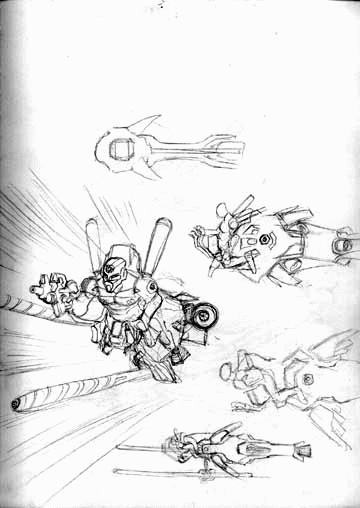
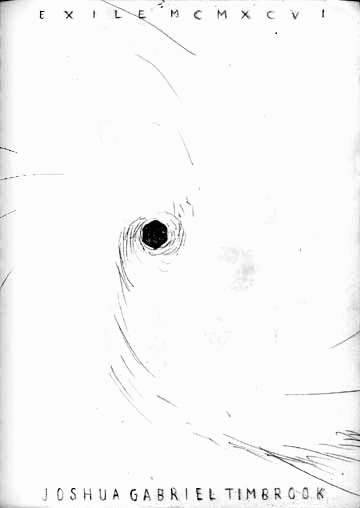
 •Thanks for Reading!•
•Thanks for Reading!•

If anyone does actually own one of the Z-G figures and the related cards and accessories, could you do a quick review of the material for the thread? I recall it having almost nothing in common with Exile beyond the theme of the Ulsters, but I vaguely remember the small rulebook having some basic setting information and I'm curious just how much was actually kept. Also, if anyone really liked or had problems with the review, PM or let me know; the ones I've done in the past have either been rule-free books or comparatively simple games, and if I do another in the future I want it to be as good as possible.